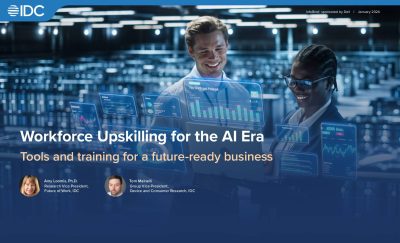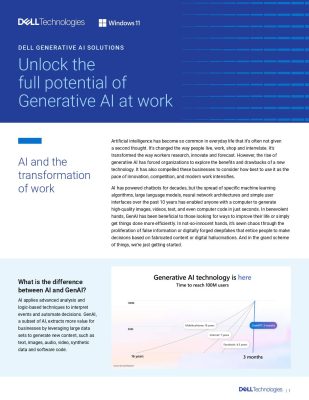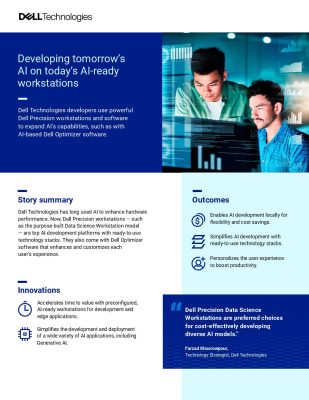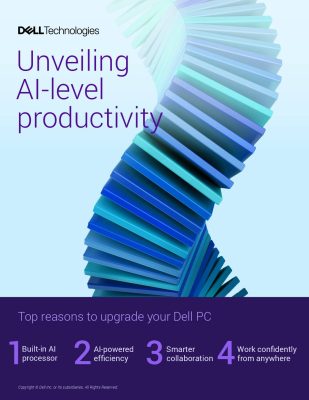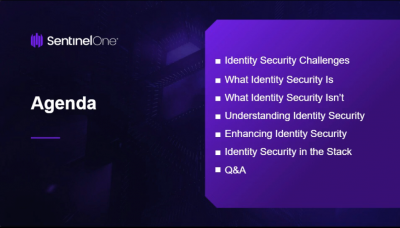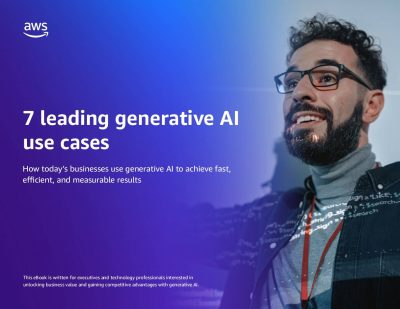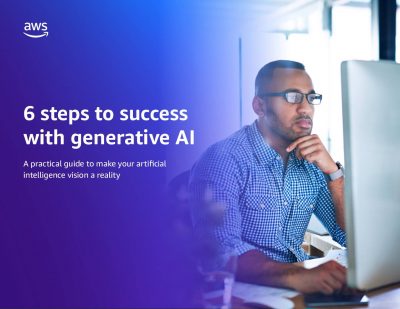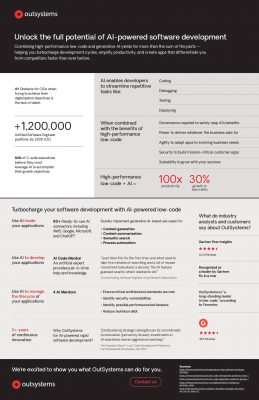Highlights:
- Larger AI models excel with vast datasets but need more processing power, which may not always be an economical option.
- Businesses must review the model card to see if the model’s training aligns with your project’s goals.
In 2023, Google was at the top in developing foundational AI models, creating and testing 18 models in total. Not only this, Microsoft, a major funder of OpenAI, jointly produced 16 models, little less than Google.
The figures show that organizations are in a clear race to build AI foundational models to maximize ROI, get a strong base, and unlock the fullest potential of AI.
Interestingly, organizations often have clear aims for results they expect from generative AI, but the way to attain them remains unclear. The specific method you choose to get results will depend on several key aspects, including:
- The types of data sets you use
- The AI models you choose
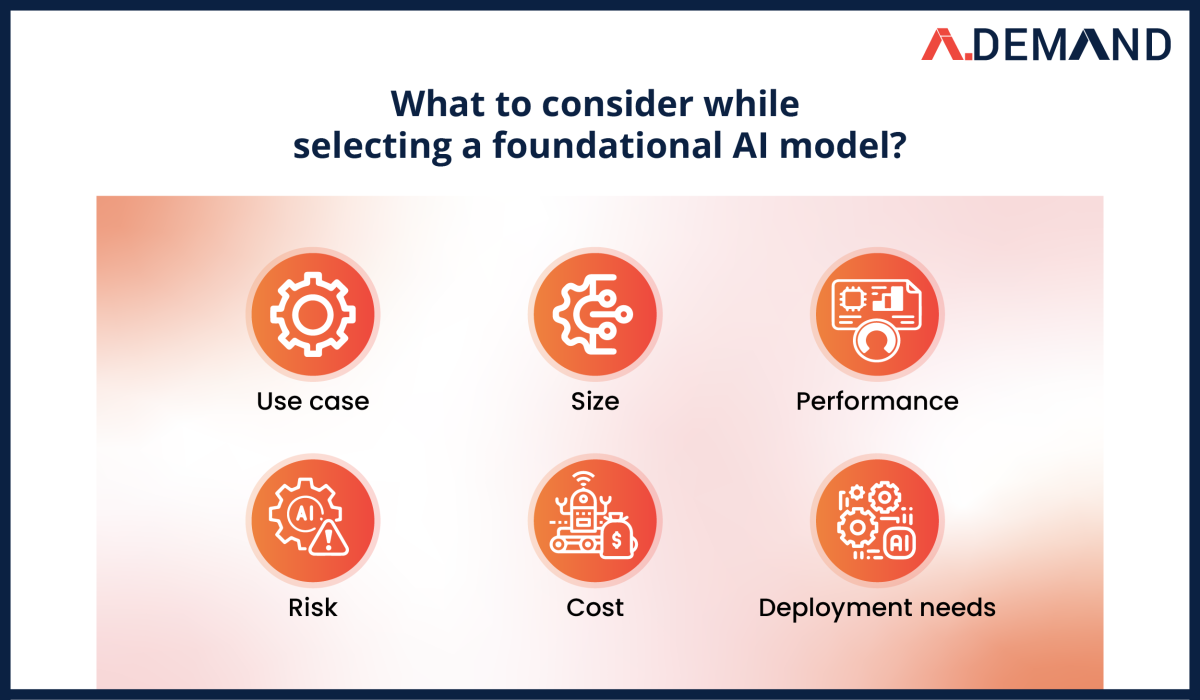
Importantly, biases in training data or inaccuracy in upstream models can lead to financial downturn, legal complexities, and damage to your enterprise’s reputation. Therefore, making wise choices is essential.
Lastly, the significant thing to consider here is who needs to be involved in selecting the right foundational model AI. It includes:
- Data scientists
- Business analyst
- Machine learning engineers
- Legal and compliance teams
- Other decision-makers
Optimizing AI Model Selection: A Comprehensive Framework
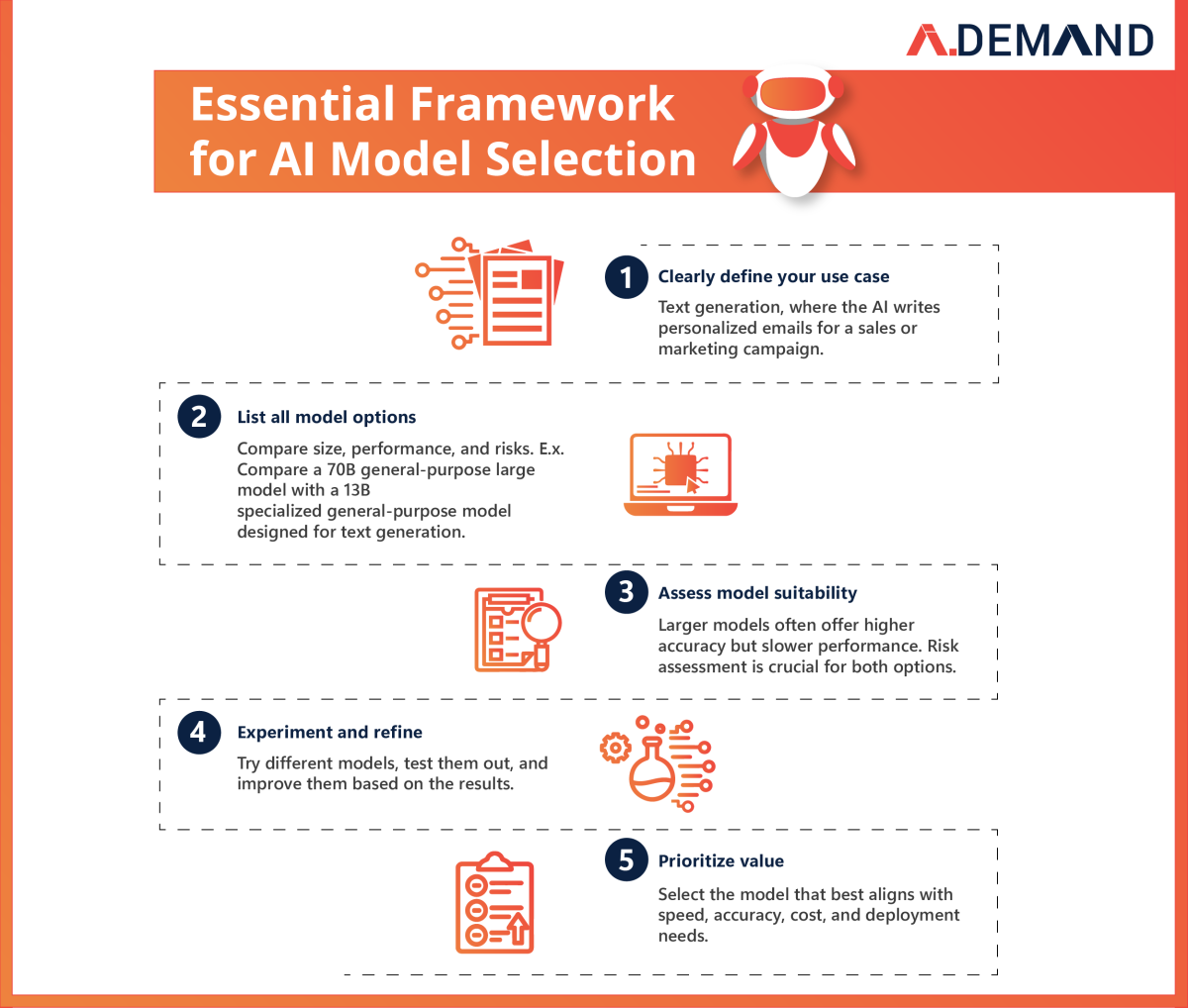
These five steps help you unlock the true potential of AI and optimize AI model selection to enhance scalability.
AI Model Matchmaker: Use Cases for Top Performance
The important thing is that your AI model must align perfectly with your specific requirements.
The easiest way to select the right generative AI foundational model is to begin with the desired prompt and answer and then figure out the data needed to get that answer.
Guidance from subject matter expert
Businesses must collaborate with products, engineering, and business sponsors to know the prompts required to seize business problems.
Also, incorporate industry terminology and specific words into the prompts. In the end, it’s all about the selection of words. You need:
- To make the prompts as relevant to the use cases as possible.
- To break down the use case into prompts.
- To build the particulars of your business into the prompts at multiple points.
All of this is required because even subtle variations in the prompts can majorly affect the selection of a specific model.
Selecting the ideal model
To evaluate if a model is comfortable with your needs, you must review the model card to see if it has been trained on data relevant to your purpose.
Also, pre-trained foundation AI models can be fine-tuned for specific use cases, such as sentiment analysis or document summarization, allowing your team to utilize zero-shot prompting for desired results.
This method empowers rapid experimentation with targeted, domain-specific models, desiring less internal training and expertise to adapt. Consequently, you can attain a faster time to value.
Right-size AI: When Smaller Models Deliver Bigger Results
Efficiency is a must
Large AI models excel because they are trained on large datasets, allowing them to capture intricate patterns and subtle relationships in data, resulting in high-quality outputs.
However, they require bigger processing power, incur higher costs, and may not always provide great accuracy.
Before you select a larger model, consider whether the smaller model can deliver the results you need.
Strategic model size customization for efficient performance
Start with the largest or highest-performing model and apply a simple prompt to get the desired performance.
Next, come to a smaller model and use methods like prompt tuning to calculate if similar results can be attained.
Prompt tuning on a smaller model is more economical than fine-tuning the same model. It demands substantial data and computing resources yet still delivers accurate and contextually relevant responses.
Best KPIs for Evaluating AI Model Performance
When evaluating model performance, key criteria include accuracy, reliability, and speed, with the importance of each varying by use case.
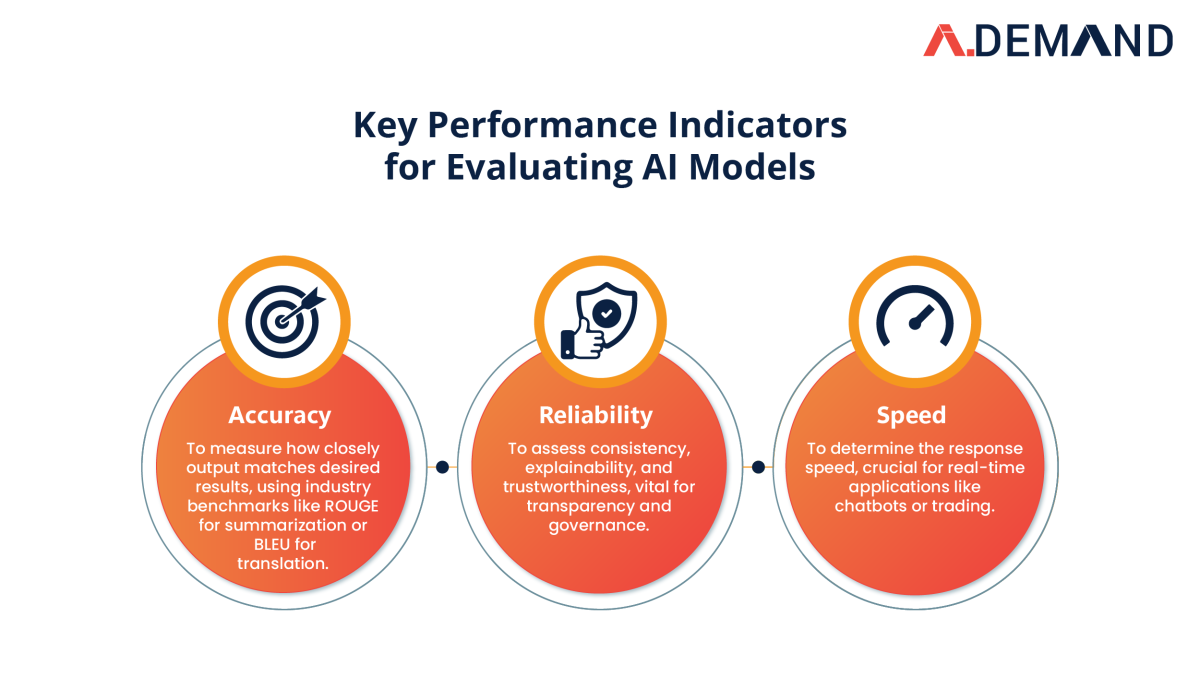
Tailor Choices According to Cost and Deployment Needs
The goal is not just maintaining task accuracy but also gaining insights on ROI and cost-effectiveness.
When choosing foundational models in generative AI, cost plays a crucial role. A more expensive model might be gently more accurate than a smaller, cheaper one. However, the real consideration is whether the expensive model’s ROI justifies its use for the specific case.
The right balance between performance, speed, and cost
A less expensive and smaller model may not compete with the performance or accuracy of a costly model. However, it might still be a viable option if it provides advantages like greater transparency and lower latency.
For example, a less costly model could be scaled across your enterprise for different use cases, enhancing its overall value.
Conversely, if your use case expects high accuracy and precision, a larger and costlier model might be required. However, this can result in reducing returns with ROI, making it a subject of tradeoffs.
Prompt tuning will help
Instead of investing your money on a large model, try “prompt tuning” a smaller one. This budget-friendly approach utilizes your current resources to customize the model to meet your requirements. It offers equal or better results than a larger, complex, and expensive model.
Decision on model deployment
Finally, organizations need to consider deployment and how to deploy the model and data. The AI models you select should align with your applications, partners, existing vendors, and your overall AI and data platform—whether in the cloud, on-premises or in a hybrid setup.
For example, if you consider an open-source model like Flan-UL2 and have trained it with your data, you might require on-premises deployment for security and better control.
Nevertheless, this approach can be costlier due to the model’s size and the computing resources required, like the number of GPUs required. Ultimately, selecting an AI model and deployment method involves maintaining costs, performance, security, and governance.
Conclusion
Businesses need a multi-model approach that is necessary for success with generative AI. After all, the right foundational AI model improves performance and accuracy.
Businesses need a scalable, cost-effective, and high-performance model to manage parameters like cost, performance, and risk.
Lastly, generative AI can influence various business aspects. Still, AI model selection and optimization require ongoing evaluation of the relevance, model size, performance, and deployment methods to get the best ROI and results.
Enhance your expertise by accessing a range of valuable AI-related whitepapers in our resource center.





